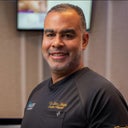There is an uneven bump of cartilage on the right tip of my nose. It is higher up than the left side cartilage and stands out when the light hits it. If I press it down it moves but "clicks" back into place. It also makes my nose look like the right side is collapsing. Can this be fixed?
Answers (16)
From board-certified doctors and trusted medical professionals
Dr. Steven M. Denenberg, MD

Dr. Steven M. Denenberg, MD
Board Certified Facial Plastic Surgeon
Answer
Dr. Kenneth Hughes, MD

Dr. Kenneth Hughes, MD
Board Certified Plastic Surgeon
Answer
Dr. Suleyman Tas, MD, FEBOPRAS

Dr. Suleyman Tas, MD, FEBOPRAS
Plastic Surgeon
Answer
Dr. Samuel Lin, MD, FACS

Dr. Samuel Lin, MD, FACS
Board Certified Plastic Surgeon
Answer
Dr. Richard G. Reish, MD, FACS

Dr. Richard G. Reish, MD, FACS
Board Certified Plastic Surgeon
Answer
Dr. Ronald J. Edelson, MD

Dr. Ronald J. Edelson, MD
Board Certified Plastic Surgeon
Answer
Dr. Mark Been, MD
Dr. Mark Been, MD
Board Certified Facial Plastic Surgeon
Answer
Dr. Gary Linkov, MD

Dr. Gary Linkov, MD
Board Certified Facial Plastic Surgeon
Answer
Dr. Curtis Perry, MD
Dr. Curtis Perry, MD
Board Certified Facial Plastic Surgeon
Answer
More Rhinoplasty Questions
See all Rhinoplasty Q&AWE SEND PRETTY
EMAILS
What’s trending? Who’s turning heads? Which TikTok myths need busting? We’ve got you. No fluff, no gatekeeping—just real talk. Get our free, unfiltered newsletter.
